Chegā Soflā / Tol-e Chegā Soflāتل چگا سفلی / چگا سفلی
Location: Tol-e Chegā Soflā is located in the Zohreh Plain, Khuzestan Province.
30°18’37.9″N 50°11’40.5″E
Map
Historical Period
Neolithic
History and description
Chegā Soflā is located on the south bank of the Zohreh River about 45 km south of the present-day city of Behbahan and 20 km north of the Persian Gulf’s coast. The plain of the Zohreh River, where the site lies, is bounded by two ridges of Aghājari or Pazanan in the north and Rag Sefid or Zeidun Mountain in the south. The Zohreh River with its vast flooding bed flows in the middle of this plain (fig. 1).
The excavated remains consist of a residential area and a cemetery (fig. 2).
The cemetery: Ten graves were carefully excavated in three trenches (fig. 3) named Area A (3 graves: AG1, AG2 & AG3), Area B (6 graves: BG1, BG2, BG4, BG5, BG6 & BG7), and Area C (1 grave: CG1). Two major types of single and multiple burial graves were identified.
Single burial graves: Three simple pit graves with no architectural structure, in which the dead were placed following no specific direction or position (AG3, BG4, and BG7). Among them, grave BG7 was exceptionally rich in grave goods. It belonged to a ca. 25-year-old female, that was named Khatoun (Lady) by the excavation team. She was placed on her left side on the pebble-paved bed in a fetal position (fig. 4). BG7 grave goods included copper and stone vessels, a pottery beaker, a copper dagger, a large sword, a marble weight stone (7200 gr.), and small copper objects like knitting hooks and knives. Her skeletal remains were delivered to the Susa Archaeological Museum where they have been since put on display in a special gallery.
Multiple burial graves: These include a diverse range of types in terms of funerary architecture and materials, and clearly show a distinct burial practice for the Later Village Period society of Chegā Soflā. The funerary architecture consists of stone graves (AG1, BG2), stone graves with chineh walls (AG2 and BG1), and graves in mud-brick (BG5 and CG1 or mud-brick graves (BG6) (fig. 5). Graves are all rectangular with a southeast-northwest orientation. Each excavated grave has an entrance on its western side.
Three distinct burial practices were recognized as regards the multiple burial graves: Type 1- intentional arrangement of the bones. Distinctively BG1 in this type is placed while bones in this grave were arranged apparently according to the interval of their death from the eastern end of the grave. Bones' general arrangement, their unanatomical order, the rounded arrangement of skulls with long bones placed among them, the accumulation of skeletons, and the striking presence of deformed skulls show that bones were arranged or placed in the grave in several stages after body decomposition. Only one skeleton was identified in its anatomical position. Type 2- graves with an ossuary: an ossuary was identified in the eastern end of graves AG1, AG2, BG1, and BG2, in which a dense accumulation of bones was found. The ossuary was separated from the main burial chamber by a dividing vertical stone slab in BG2 (fig. 6). Type 3- Pushing back older bones: this third type is similar to both the first and second types. Older bones were pushed back towards the eastern end of the grave-like Type 1 but there is no specific arrangement and no ossuary. CG1 and BG6 are two examples of this type. One skeleton was placed in its anatomical order near the grave entrance and older bones were pushed back towards the eastern end of the grave.
The residential sector: The residential sector of the site was explored in the 2019 excavation season. This consists of a monumental building (F 1-5) and an offering platform (fig. 7).
The Monumental Building is a relatively H-shaped structure (Features 1–5) built of neatly made rectangular (68x32x8 cm) baked bricks. The architectural remains consist of twin east-west parallel walls, with a maximum length of 3 meters and an average remaining height of ca. 20 cm with no door or any other type of opening; a connecting northeast-southwest wall measuring 370 cm in length and ca. 1 m in width, and a circular structure to the north of this H-shaped structure, presumably an “altar”. These structures were built of baked bricks and partly of sandstone over debris that was deliberately placed as a foundation.
The Offering Platform lies to the west of the Monumental Building complex. It is a distinct low platform made of chineh and mud-brick. Complex set offerings were discovered: about 73 stone steles that were attached to the platform (Feature 7); two shallow pits with remaining sacrificed animals (Features 11 & 15); two low pits containing highly symbolized pottery vessels (Feature 13 & 17). There are some other features (Features 9 & 10) on the platform whose functions were not determined clearly (fig. 7).
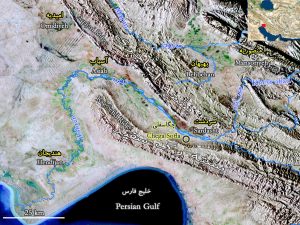
Fig. 1. Map showing the location of Tol-e Chegā Soflā (photo: A. Moghaddam)

Fig. 2. The mounds of Chegā Soflā: Residential and cemetery areas (photo: Zohreh Prehistoric Project archive map by Ramin Yashmi and Loghman Ahmadzadeh (left); Dittmann, Eine Randebene des Zagros, p. 115, Abb 9)
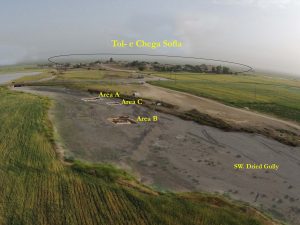
Fig. 3. Chegā Soflā. The excavated areas in the southwest dried gully in 2016 (photo: Loghman Ahmadzadeh, Zohreh Prehistoric Project archive)

Fig. 4. Chegā Soflā. Tomb of Khatoun. One of the single burial graves, excavated in the 2016 season (photo: Sara Freydouni, the Zohreh Prehistoric Project archive)
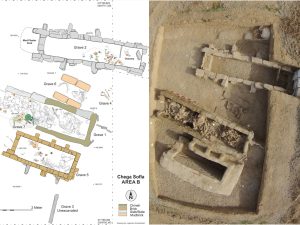
Fig. 5. Chegā Soflā. Various multiple burial grave structures in Area B (photo: Loqman Ahmadzadeh, the Zohreh Prehistoric Project archive)
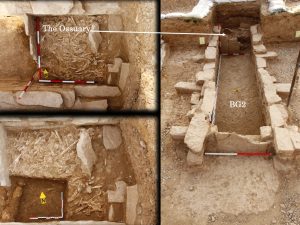
Fig. 6. Chegā Soflā. The ossuary in BG2 (photo: Sara Freydouni, the Zohreh Prehistoric Project archive)

Fig. 7. Chegā Soflā. The Sanctuary (Area C), North Mound of Tol-e Chegā Soflā (photo: Ramin Yashmi, the Zohreh Prehistoric Project archive)
Archaeological Exploration
Tol-e Chegā Soflā was first discovered by Hans Nissen and his colleagues during the 1970 survey of the Khuzestan plain on behalf of the Oriental Institute of the University of Chicago and Freie Universität of Berlin. Despite Reinhard Dittmann's mention of the site in his general study of the Neolithic cultures of southern Iran, Chegā Soflā was mostly forgotten or dismissed in later archaeological studies in Iran. In 2009, Kamyar Abdi, Mohammad Taghi Atayi, and Shahram Zare visited Tol-e Chegā Soflā. They compiled a dossier for the site to be registered on the List of National Heritage Monuments and Sites. In 2016, the site became the focal point of the Zohreh Prehistoric Project led by Abbas Moghaddam on behalf of the Iranian Center for Archaeological Research. Four excavation seasons were conducted at the site of Chegā Soflā, the astonishing results of which have since enriched our knowledge of the late fifth and early fourth millennia B.C. in the Persian Gulf hinterland.
Finds
Finds from the cemetery: A wide range of finds including pottery and stone vessels, metal objects and vessels as well as small ornaments were recovered from the excavated graves. Archaeometallurgic analysis showed that except for a small quantity of gold and silver, all metallic objects were of high purity copper. Chegā Soflā's collection of copper items is diverse: copper vessels, weaponry (sword and dagger), ornaments, and copper discs. A silver bracelet from grave AG1 is probably one of the oldest silver objects recovered so far (fig. 8). The well-fired pottery vessels are all fine buff ware decorated in brown and include bowls, jars, and beakers. The most common decorative motif is the stepped design. Other geometrical motifs like swastikas as well as animal motifs like rows of lizards or bending snakes are also common (fig. 9). Stone vessels were made from aragonite and other types of limestone (fig. 10). A total number of 23 stone vessels were found in graves BG1, BG2, BG3, BG5, BG7, and CG1. They have brown, pink, and grey veins and are in a diverse range of forms including jars, pots, bowls, and conical beakers. A diverse range of small objects of different shapes and types were also recovered (fig. 11). They include shell, metal, stone, bone, bitumen, and enstatite items. Deformed skulls are known from other sites in Mesopotamia and Iran, but at Chegā Soflā, the concentration of deformed skulls in grave BG1 (12 skulls) is striking. One example is also recovered from BG6, although the actual number might have been more. Chegā Soflā's deformed skulls were shaped by one/two-band type circumferential head shaping from a very young age (fig. 12).
Finds from the Monumental Building and the Offering Platform consist of stone steles that are smoothly rounded at one end, and resemble anthropomorphic idols. Their average height is 55, with 22 cm width and 4 cm thickness. Most of them were simple but a few of them were decorated with designs such as horned quadrupeds facing each other, a combination of confronted quadrupeds and human masks, human masks, and especially human eyes (fig. 13). Scarified animals were regularly placed in two offering shallow pits (Features 11 & 15). Based on archaeo-zoological studies, eight domesticated goats (Capra hircus) and eight goats with a domesticated cow (Bus Taurus) were placed respectively in Feature 11 and Feature 15. Goats were average 15 months old while the cow was about 18 months. Skeletal remains in Feature 11 were mostly positioned towards the north, while whole skeletons in Feature 15 were oriented towards the south (fig. 14). Based on biometric measuring, almost all sacrificed animals in both features were male. Several pottery vessels including beakers, cups, stands, and basins decorated with symbolic designs (fig. 15). A considerable number of these vessels are almost identical to examples from Tol-e Bakun A, Susa Acropole, and Tol-e Nourabad in terms of chronological and stylistic aspects (fig. 15).

Fig. 8. Remains of a silver bracelet from grave AG1 (photo: Sara Freydouni, the Zohreh Prehistoric Project archive)

Fig. 9. Various pottery vessels from the Chegā Soflā cemetery (photo: Sara Freydouni and Media Rahmani, the Zohreh Prehistoric Project archive)
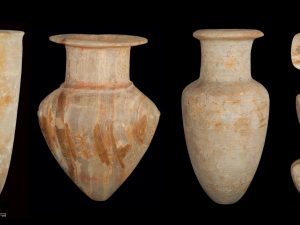
Fig. 10. Various stone vessels from the Chegā Soflā cemetery (photo: Media Rahmani, the Zohreh Prehistoric Project archive)
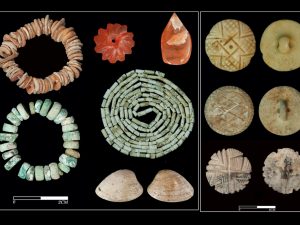
Fig. 11. Various ornaments and stone stamp seals from the Chegā Soflā cemetery (photo: Media Rahmani and Sara Freydouni, the Zohreh Prehistoric Project archive)
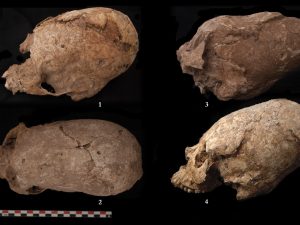
Fig. 12. Deformed skulls from the Chegā Soflā cemetery: 1. BG1.12; 2. BG1.29; 3. BG6.1 & 4. BG1.5 (photo: Ramin Yashmi, the Zohreh Prehistoric Project archive)
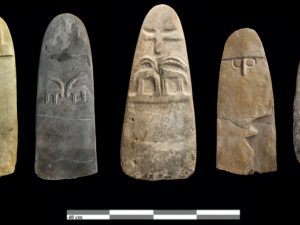
Fig. 13. Decorated steles from Chegā Soflā Sanctuary (photo: Sara Freydouni, the Zohreh Prehistoric Project archive).
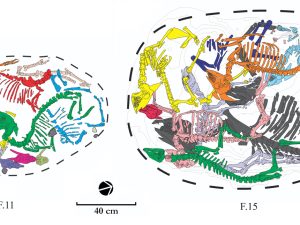
Fig. 14. Sacrificed animals in two offering pits in the Sanctuary, F. 11 & F. 15 (photo: Ramin Yashmi and Hoseyn Davoudi, the Zohreh Prehistoric Project archive)
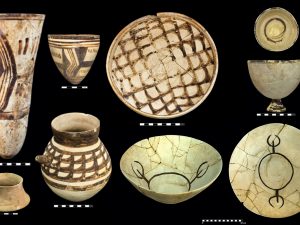
Fig. 15. Various pottery vessels from the Chegā Soflā Sanctuary (photo: Sara Freydouni, the Zohreh Prehistoric Project archive)
Bibliography
Davoudi, H., “Zoo-archaeological Study Report in Tol-e Chega Sofla, Northern Mound,” in Niyāyeshgāh-e Tol-e Chegā Soflā, kāvoshhā-ye fasl-e sevvom, zemestān-e 1397, A. Moghaddam (ed.), Tehran, 1398/2019, pp. 356–451, Archaeological Report Monograph, Series 2, No. 1, IRICHT. (in Persian)
Dittmann, R, Eine Randebene des Zagros in der Frühzeit: Ergebnisse des Behbehan – Zuhreh Surveys, Berliner Beiträge zum Vorderen Orient Band 3, Berlin, 1984.
Dittmann, R., Betrachtungen zur Frühzeit des Südwest-Iran: Regionale Entwicklungen vom 6. bis zum frühen 3. Vorchristlichen Jahrtausend, Berliner Beiträge zum Vorderen Orient Band 4, Berlin, 1986.
Freydouni, S., “Description and Classification of Ornaments and Seals,” in Kāvoshhā-ye bāstānshenāsi dar gūrestān-e Tol-e Chegā Soflā, fasl-e avval, zemestān-e 1394, A. Moghaddam (ed.), Tehran, 1398/2019, pp. 315-332. (in Persian).
Mohammadkhani, K., “Results of Archaeo-Magnetic inspections at Tol-e Chega Sofla Cemetery,” in Kāvoshhā-ye bāstānshenāsi dar gūrestān-e Tol-e Chegā Soflā, fasl-e avval, zemestān-e 1394, A. Moghaddam (ed.), Tehran, 1398/2019 pp. 39-48. (in Persian)
Moghaddam, A., “A Fifth Millennium BC Cemetery in the North Persian Gulf: Zohreh Prehistoric Project,” Antiquity, vol. 90, no. 353, 2016, pp. 1-6. doi:10.15184/1qy.2016.166.
Moghaddam, A., and N. Miri, “Tol-e Chega Sofla Cemetery: A Phenomenon in the Context of Late 5th Millennium Southwest Iran,” Pearls, Politics, and Pistachios. Essays in Anthropology and Memories on the Occasion of Susan Pollock’s 65th Birthday, Herausgeber Innenkollektiv, Berlin, 2021, pp. 47-60. doi:10. 11588/propylaeum. 837.c10734.
Moghaddam, A., “A Fifth Millennium BCE Sanctuary at Tol-e Chega Sofla in the Northern Persian Gulf.” Archaeological Research in Asia, vol. 27, 2020, pp. 1-5. doi:10.1016/j. ara.2021. 100291.
Nezafati, N., “Preliminary Report of the Archaeometric Studies of Tol-e Chega Sofla Cemetery,” in Kāvoshhā-ye bāstānshenāsi dar gūrestān-e Tol-e Chegā Soflā, fasl-e avval, zemestān-e 1394, A. Moghaddam (ed.), Tehran, 1398/2019, pp. 333-340. (in Persian)
Nissen, H. J., and C. L. Redman, “Preliminary Notes on an Archaeological Surface Survey in the Plain of Behbehan and the Lower Zuhreh Valley,” Bastan Chenasi va Honar- e Iran, no. 7, 1970-71, pp. 48–50.
Salmanzadeh, J., and A. Sarkhosh, “Classification, Typology and Comparison of Metal Objects,” in Kāvoshhā-ye bāstānshenāsi dar gūrestān-e Tol-e Chegā Soflā, fasl-e avval, zemestān-e 1394, A. Moghaddam (ed.), Tehran, 1398/2019, pp. 301–14. (in Persian)
Vahdatinasab, H., and M. Kazazi, “Physical Anthropology Studies on Human Remains,” Kāvoshhā-ye bāstānshenāsi dar gūrestān-e Tol-e Chegā Soflā, fasl-e avval, zemestān-e 1394, A. Moghaddam (ed.), Tehran, 1398/2019, pp. 157-242. (in Persian)
Valizadeh, Z., “Stone Vessels Description, Classification and Typology,” in Kāvoshhā-ye bāstānshenāsi dar gūrestān-e Tol-e Chegā Soflā, fasl-e avval, zemestān-e 1394, A. Moghaddam (ed.), Tehran, 1398/2019, pp. 285–302. (in Persian)
Zadehdabbagh, M., “Pottery Vessels Description and Classification,” Kāvoshhā-ye bāstānshenāsi dar gūrestān-e Tol-e Chegā Soflā, fasl-e avval, zemestān-e 1394, A. Moghaddam (ed.), Tehran, 1398/2019, pp. 261-284. (in Persian)

































































































































